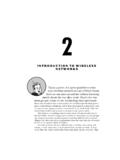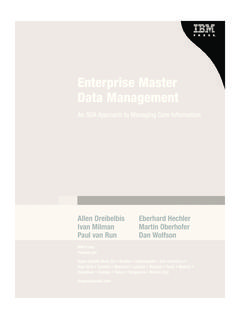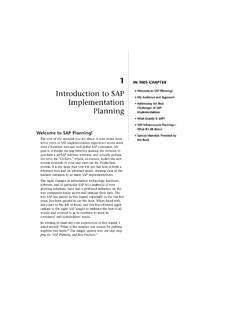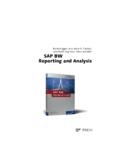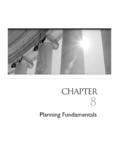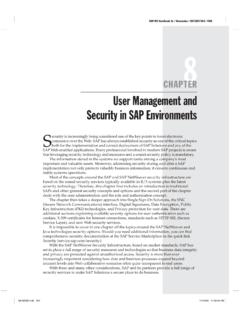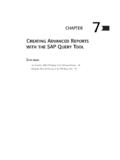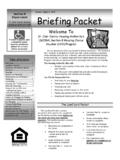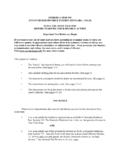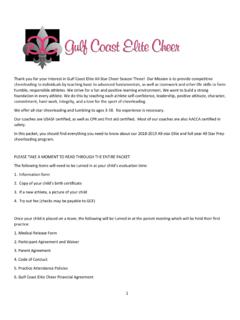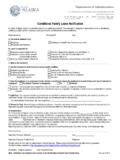Transcription of Troubleshooting IP Routing - cdn.ttgtmedia.com
1 C H A P T E R7 Troubleshooting IP RoutingThis Troubleshooting chapter has several goals. First, it explains several tools and functions not covered in Chapters 4 through 6 specifically, tools that can be very helpful when you re analyzing problems. This chapter also reviews concepts from all three of the other chapters in Part II, IP Routing . It pulls together the concepts by showing a suggested process for Troubleshooting Routing problems, as well as examples of how to use the process. The second half of the chapter focuses on a series of Troubleshooting tips for many of the specific topics covered in Chapters 4 through 6.
2 Do I Know This Already? QuizThe Troubleshooting chapters of this book pull in concepts from many other chapters, including some chapters in CCENT/CCNA ICND1 Official Exam Certification Guide. They also show you how to approach some of the more challenging questions on the CCNA exams. Therefore, it is useful to read these chapters regardless of your current knowledge level. For these reasons, the Troubleshooting chapters do not include a Do I Know This Already? quiz. However, if you feel particularly confident about Troubleshooting IP Routing features covered in this book and CCENT/CCNA ICND1 Official Exam Certification Guide, feel free to move to the Exam Preparation Tasks section near the end of this chapter to bypass the majority of the Chapter 7: Troubleshooting IP RoutingFoundation TopicsThis chapter focuses on Troubleshooting the IP Routing process.
3 To that end, it begins with a section about two important Troubleshooting tools: ping and traceroute. Following that, the chapter examines the IP Routing process from a Troubleshooting perspective, particularly focusing on how to isolate Routing problems to identify the root cause of the problem. The final section covers a wide variety of small topics, all of which can be useful when you re Troubleshooting IP Routing ping and traceroute CommandsThis section examines a suggested process of Troubleshooting IP Routing in other words, the data plane process of how hosts and routers forward IP packets.
4 To that end, this section first examines a set of useful tools and protocols in particular, ICMP, ping, and traceroute. Following that, the text suggests a good general Troubleshooting process for IP problems, with a few examples to show how to use the Control Message Protocol (ICMP)TCP/IP includes ICMP, a protocol designed to help manage and control the operation of a TCP/IP network. The ICMP protocol provides a wide variety of information about a network s health and operational status. Control Message is the most descriptive part of the name.
5 ICMP helps control and manage IP s work by defining a set of messages and procedures about the operation of IP. Therefore, ICMP is considered part of TCP/IP s network layer. Because ICMP helps control IP, it can provide useful Troubleshooting information. In fact, the ICMP messages sit inside an IP packet , with no transport layer header, so ICMP is truly an extension of the TCP/IP network 792 defines ICMP. The following excerpt from RFC 792 describes the protocol well:Occasionally a gateway (router) or destination host will communicate with a source host, for example, to report an error in datagram processing.
6 For such NOTEThis chapter, and Chapter 15 in CCENT/CCNA ICND1 Official Exam Certification Guide, both explain details of how to troubleshoot the IP Routing process. IP Routing is vitally important on both the ICND1 and ICND2 exams, as well as on the CCNA exam, so there is overlap between the exams, requiring some overlap in the books. However, this chapter covers many topics that go beyond the details required for the ICND1 exam. To be fully prepared, read this entire chapter, but feel free to skim portions if the chapter seems repetitive with the ICND1 ping and traceroute Commands 271purposes, this protocol, the Internet Control Message Protocol (ICMP), is used.
7 ICMP uses the basic support of IP as if it were a higher level protocol; however, ICMP is actually an integral part of IP and must be implemented by every IP defines several different types of messages to accomplish its varied tasks, as summarized in Table ping Command and the ICMP Echo Request and Echo ReplyThe ping command uses the ICMP Echo Request and Echo Reply messages. In fact, when people say they sent a ping packet , they really mean that they sent an ICMP Echo Request. These two messages are somewhat self-explanatory.
8 The Echo Request simply means that the host to which it is addressed should reply to the packet . The Echo Reply is the ICMP message type that should be used in the reply. The Echo Request includes some data that can be specified by the ping command; whatever data is sent in the Echo Request is sent back in the Echo ping command itself supplies many creative ways to use Echo Requests and Replies. For instance, the ping command lets you specify the length as well as the source and destination addresses, and it also lets you set other fields in the IP header.
9 Chapter 4, IP Routing : Static and Connected Routes, shows an example of the extended ping command that lists the various Destination Unreachable ICMP MessageThis book focuses on IP. But if you take a broader view, the role of the entire set of TCP/IP protocols is to deliver data from the sending application to the receiving application. Hosts and routers send ICMP Destination Unreachable messages back to the sending host when that host or router cannot deliver the data completely to the application at the destination 7-1 ICMP Message Types MessageDescriptionDestination UnreachableTells the source host that there is a problem delivering a ExceededThe time that it takes a packet to be delivered has expired, so the packet has been router sending this message has received a packet for which another router has a better route.
10 The message tells the sender to use the better Request, Echo ReplyUsed by the ping command to verify Chapter 7: Troubleshooting IP RoutingTo aid in Troubleshooting , the ICMP Unreachable message includes five separate unreachable functions (codes) that further identify the reason why the packet cannot be delivered. All five code types pertain directly to an IP, TCP, or UDP example, the internetwork shown in Figure 7-1 can be used to better understand some of the Unreachable codes. Assume that Fred is trying to connect to the web server, called Web.

